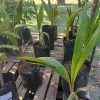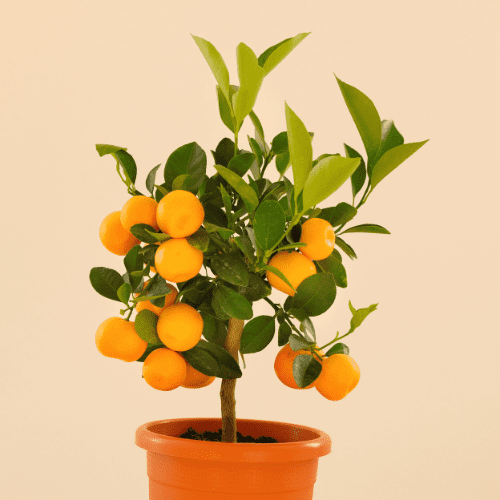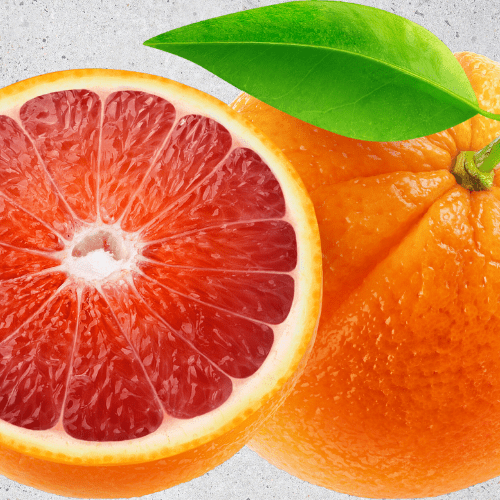Position
Choose a sunny location with well-drained soil. Coconut trees thrive in tropical or subtropical climates with high humidity and plenty of sunlight.
Size
These trees reach heights of 7-10 meters, significantly shorter than the standard coconut tree, which can grow up to 30m tall.
Soil Type
Slightly acidic to neutral soil with good drainage. Prepare the soil by mixing in organic matter to improve its fertility and drainage.
Dig a hole that is twice the size of the pot in which your coconut tree is currently growing. Make sure the top of the root ball is level with the ground surface when you plant it. Space multiple trees at least 7-10m apart.
Mulch
Apply a layer of mulch around the base of the tree to help retain moisture, regulate soil temperature, and suppress weed growth.
Watering
Coconut trees need consistent moisture, especially when they are young. Water the tree regularly to keep the soil consistently moist but not waterlogged. Once established, coconut trees are drought-tolerant.
Fertilising
Fertilise your dwarf coconut tree with a balanced, slow-release fertilizer specifically formulated for palms.
Pruning
Prune your coconut tree to remove dead or damaged fronds (leaves). This helps the tree allocate more energy to fruit production and maintain a pleasing appearance.
Pests & Diseases
Keep an eye out for common pests like mealybugs and scale insects. Use organic pesticides if necessary. Additionally, be vigilant for diseases, such as lethal yellowing, and take appropriate measures to prevent or treat them.
Harvesting
Coconut trees typically start bearing fruit after 3-5 years, and the fruit matures in about 12 months. Harvest coconuts when they are green to greenish-brown, as they may start falling when they ripen. You can use a long pole with a hook or hire a professional to help with harvesting if your tree is too tall.










